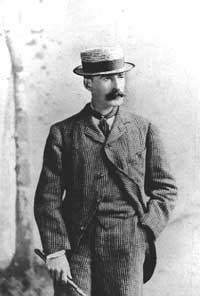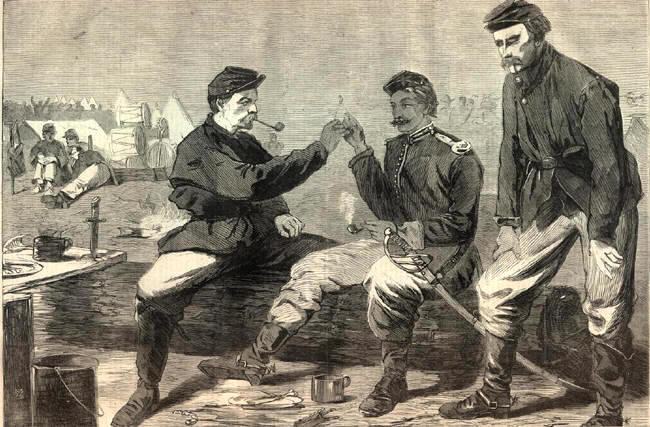Winslow Homer
![]()
This Site:
Starting a Collection
Top Picks
Online Gallery
Search Page
Order
Winslow Homer
Thomas Nast
Ken Burns Civil War
|
|
|
|
Winslow Homer |
Winslow Homer Biography (February 24, 1836 – September 29, 1910)Winslow Homer was a noted American artist during the 1800's. He is remembered for his landscapes, many featuring scenes of the sea, boats, and coastlines. Homer did not receive formal art training. He began his art career as an apprentice for a commercial lithographer. In the late 1850's he began doing work for Harper's Weekly. His early work for Harper's was primarily to create line art drawings from photographs. At the time pictures were printed by "stamping" them from a large wood block. |
|
To do this, photographs had to first be converted to line art drawings by an artist. In this role, there was little room for artistic interpretation . . . the task was simply to as accurately as possible capture the details of a photograph in a drawing. As such, this work was often published without attribution to Homer. There are several examples of illustrations published which were photographs by Mathew Brady, and then converted to line art by Winslow Homer. As time progressed, Harper's began to expand Homer's role, and he was sent to events to directly create drawings. A notable example was that Homer attended Abraham Lincoln's inauguration, and created several drawings which were published by Harper's. Much of this early work could be described as accurate drawings and illustrations. He was simply capturing the image in front of him as carefully as possible. Harper's often did not cite Winslow Homer as the artist for pictures that they published. He was sometimes referred to as their "Special Artist". However, this designation was also used for other artists as well. As such, it can be difficult to know which Harper's illustrations were done by Homer, particularly in his early years with the paper. Some illustrations in Harper's include his signature in the corner of the illustration, some were attributed to him by name in the caption, and others are believed to be his because of the distinct style of the drawing.
Winslow Homer Civil War Drawing Thanksgiving-Day In The Army. After Dinner : The WishboneAs the war continued, Homer's work evolved, and you can see his distinct drawing style emerge. He began to draw pictures which were much more artistic in nature, and less like the work of a lithographer. He drew pictures which were high contrast, bold, and with less attention to detail. After the war, Homer began a career as a painter. He painted several pictures based on drawings he had done during the war, including the Sharpshooter and Prisoners from the front. Homer went to France in 1867 and began painting landscapes, as he continued to do drawings for Harper's. By 1875 he stopped his work as a commercial lithographer, and focused on his painting. His 1872 painting Snap the Whip was very well received, and was displayed at the 1876 Centennial Exposition in Philadelphia. In the 1880's he moved to Prout's Neck, Maine and began painting scenes of the sea and coast. It is interesting to note the contrast in the subject matter of his work. His early work captured the horror of the Civil War, and towards the end of his life, his work captured the peace and serenity of the Maine Coast. Winslow Homer died on September 29, 1910. |
|
![]()
|
Email us at: paul@sonofthesouth.net. Copyright © 2003-2018 Son of the South.
|
|
|
|
Are you Scared and Confused? Click Here to read My Snake Story, a story of hope and encouragement, to help you face your fears. |
||

